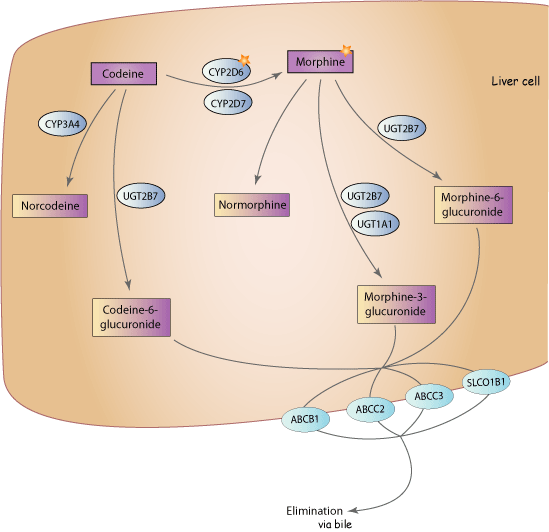Background Information| Chemical Structure| How Codeine Works in the Body| Recreational Use| How Codeine Affects History
- Codeine is a weak opiate agonist that provides relief from pain by blocking the pain signals that are being sent from the brain to affected areas of the body.
- It works on the Central Nervous System (CNS) to inhibit these pain signals. Because the transmission of the pain signals has been impaired, less pain is felt, even if the original source of the pain remains.
- Codeine mimics the effects of endorphins, which are naturally occurring painkilling chemicals produced by the body.
- To experience the painkilling properties of codeine the body has to convert it into morphine. Codeine is absorbed by the gastrointestinal tract, becoming quickly transported to various tissues throughout the body.
- Codeine does not accumulate in body tissues because it is metabolized by the liver and its metabolic products are excreted by the kidneys. The process by which codeine is metabolized is known as glucuronidation. Through O-demethylation the codeine is converted into morphine and through N-demethylation it becomes norcodeine.
- The metabolism rate is approximately 30 mg of codeine in an hour and about 90% of the drug will be excreted from the body within a day. In most people, only about 10% of codeine is transformed into morphine.

